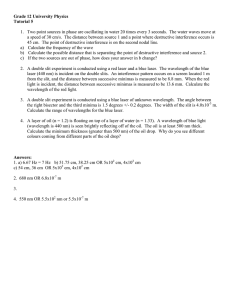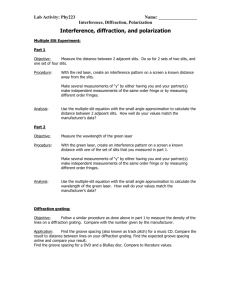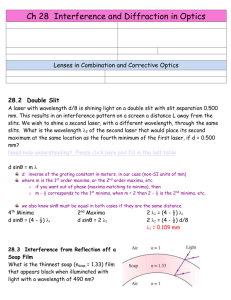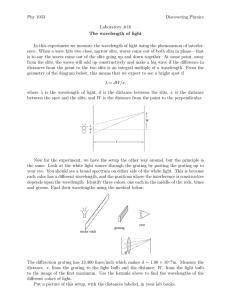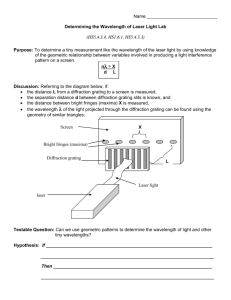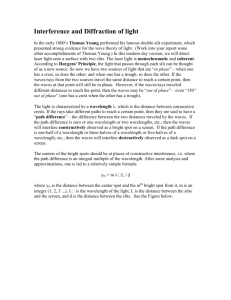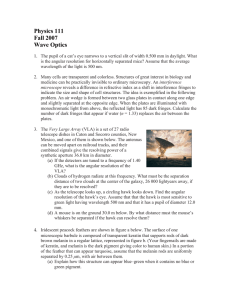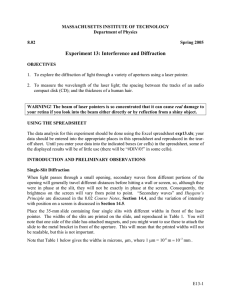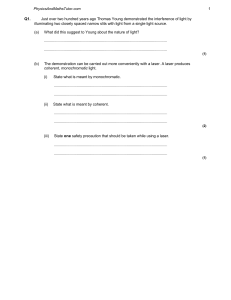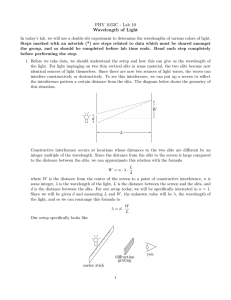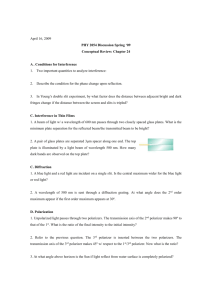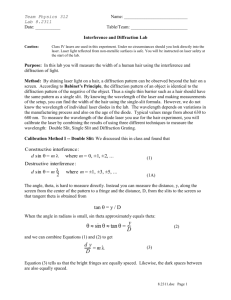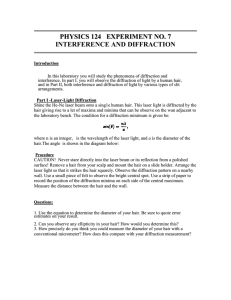Diffraction & Interference
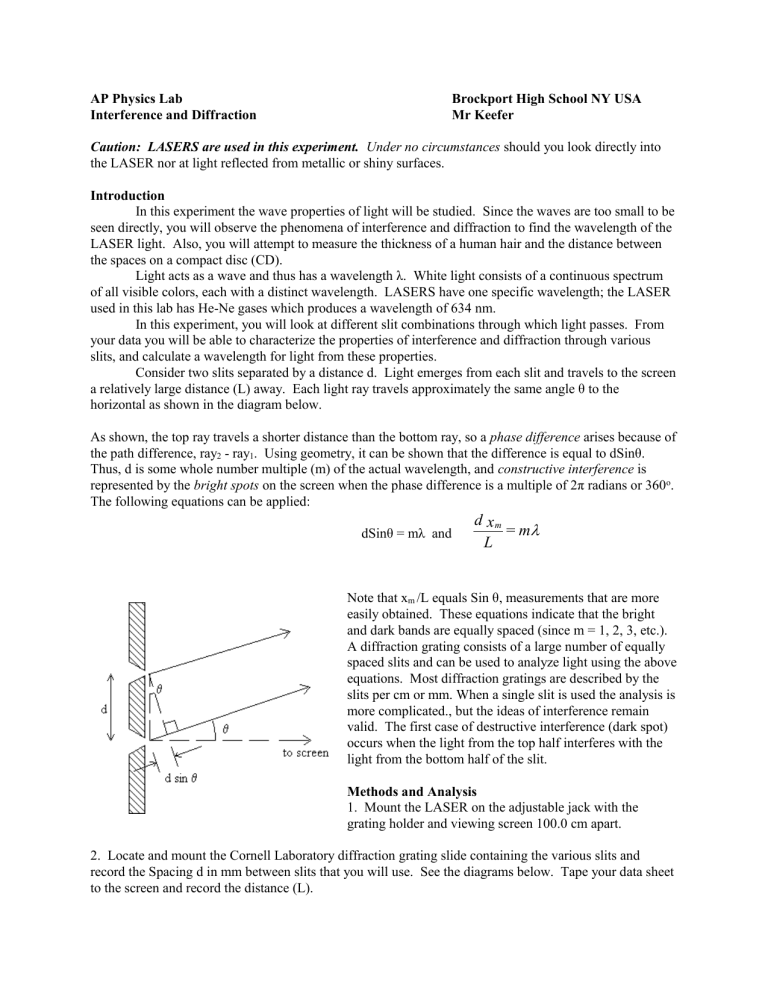
AP Physics Lab Brockport High School NY USA
Interference and Diffraction Mr Keefer
Caution: LASERS are used in this experiment.
Under no circumstances should you look directly into the LASER nor at light reflected from metallic or shiny surfaces.
Introduction
In this experiment the wave properties of light will be studied. Since the waves are too small to be seen directly, you will observe the phenomena of interference and diffraction to find the wavelength of the
LASER light. Also, you will attempt to measure the thickness of a human hair and the distance between the spaces on a compact disc (CD).
Light acts as a wave and thus has a wavelength λ. White light consists of a continuous spectrum of all visible colors, each with a distinct wavelength. LASERS have one specific wavelength; the LASER used in this lab has He-Ne gases which produces a wavelength of 634 nm.
In this experiment, you will look at different slit combinations through which light passes. From your data you will be able to characterize the properties of interference and diffraction through various slits, and calculate a wavelength for light from these properties.
Consider two slits separated by a distance d. Light emerges from each slit and travels to the screen a relatively large distance (L) away. Each light ray travels approximately the same angle θ to the horizontal as shown in the diagram below.
As shown, the top ray travels a shorter distance than the bottom ray, so a phase difference arises because of the path difference, ray
2
- ray
1
. Using geometry, it can be shown that the difference is equal to dSinθ.
Thus, d is some whole number multiple (m) of the actual wavelength, and constructive interference is represented by the bright spots on the screen when the phase difference is a multiple of 2π radians or 360 o .
The following equations can be applied: dSinθ = mλ and d
L x m
= m
Note that x m
/L equals Sin θ, measurements that are more easily obtained. These equations indicate that the bright and dark bands are equally spaced (since m = 1, 2, 3, etc.).
A diffraction grating consists of a large number of equally spaced slits and can be used to analyze light using the above equations. Most diffraction gratings are described by the slits per cm or mm. When a single slit is used the analysis is more complicated., but the ideas of interference remain valid. The first case of destructive interference (dark spot) occurs when the light from the top half interferes with the light from the bottom half of the slit.
Methods and Analysis
1. Mount the LASER on the adjustable jack with the grating holder and viewing screen 100.0 cm apart.
2. Locate and mount the Cornell Laboratory diffraction grating slide containing the various slits and record the Spacing d in mm between slits that you will use. See the diagrams below. Tape your data sheet to the screen and record the distance (L).
3. Turn on the LASER and adjust the slide such that the LASER passes through the slits. Adjust so the pattern is clear on the screen. Look for the closely spaced fringes. Mark the locations of the centers of the bright fringes . Determine the wavelength of the LASER using data from the diffraction grating. Calculate a percent error using the accepted wavelength. Describe how the screen distance affects the pattern.
Repeat the wavelength calculation for another value of d.
4. Find the single slit pattern and mount it on the setup. Sketch the pattern. Adjust the screen distance between 25 and 100 cm and note the results. Mark the locations of the centers of the bright fringes. For the single slit, describe how the screen distance affects the pattern. How is it different from the multiple slit pattern?
5. Tape a strand of your hair vertically across a blank 35 mm slide holder and adjust the LASER to hit the hair. Sketch the pattern on the paper and record the location of the first bright spot on each side of center. However, it may be more accurate to record the dark areas when determining the distance x. Determine the thickness of your hair using your equation.
6. Reflect the LASER light off the compact disc onto your screen. Record the necessary data for determining the spacing d between ridges on the CD . [See Mr
Keefer for the proper setup.]

